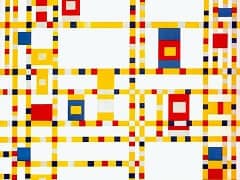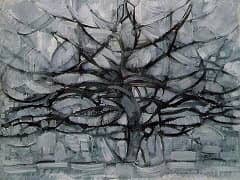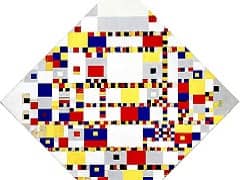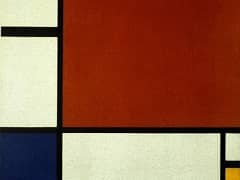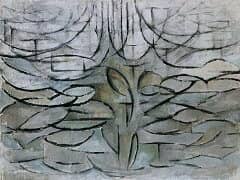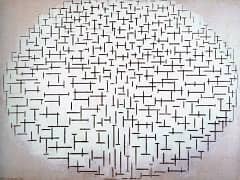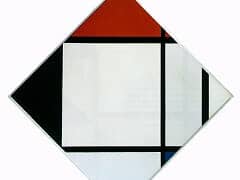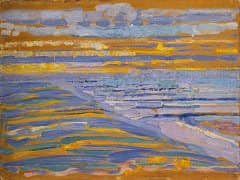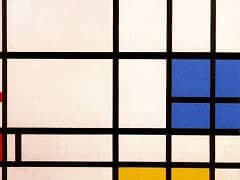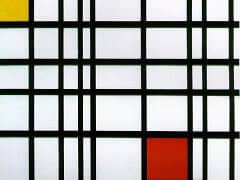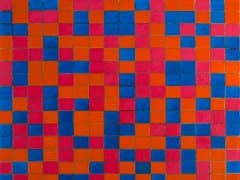Farm Near Duivendrecht, 1916 by Piet Mondrian
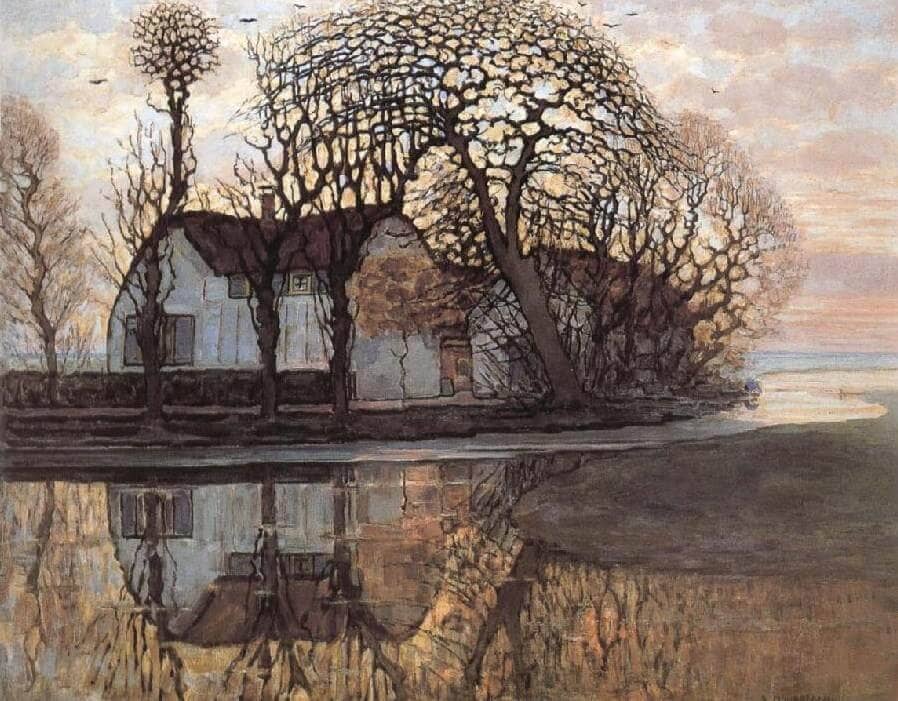
In 1908 Mondrian became deeply involved in the latest developments in art, and in the course of the next 10 years or so he developed with astonishing rapidity through a succession of styles. He began to use pure, glowing colors and expressive brushwork under the influence of pointillism and Fauvism in pictures which are almost like works of Van Gogh in their vivid colors and intensity of expression.
In Farm Near Duivendrecht, strong lines dominate this scene of a farmhouse at twilight. The dwindling light at the end of the day creates a halo of vibrant orange around the interlocking web of barren trees, highlighting the linear patterns created by their branches. Piet Mondrian often visited this farm near Duivendrecht, a small village near Amsterdam, and made many paintings of the building and surrounding trees. This scene captures his attentiveness to the nuances of light, shadow, and reflection. The painting simultaneously hints at the artist's growing interest in the flattening of forms and the linear structures of his later fully abstract paintings.
Though Piet Mondrian is best known for his non-representational paintings, his basic vision was rooted in landscape. He was particularly inspired by the flat topography of his native Holland, a subject he returned to even after he had begun working in an abstract style after attending an exhibition of the Cubist paintings of Georges Braque and Pablo Picasso in 1911. Mondrian first sketched this farm around 1905. Nine of the twenty known related paintings and drawings of the farm, however, were created later, during World War I. Mondrian likely returned to the subject because his wartime patrons generally preferred his earlier naturalistic compositions to his recent experiments with Cubism.

